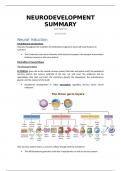Class notes
Neurodevelopment summary NWI-BB039C
- Course
- Institution
Hi, this is a summary of the neurodevelopment course 2023/2024. There are all the lectures inside of it and there are also the practice questions for the exam, plus some extra questions that may be helpful.
[Show more]



